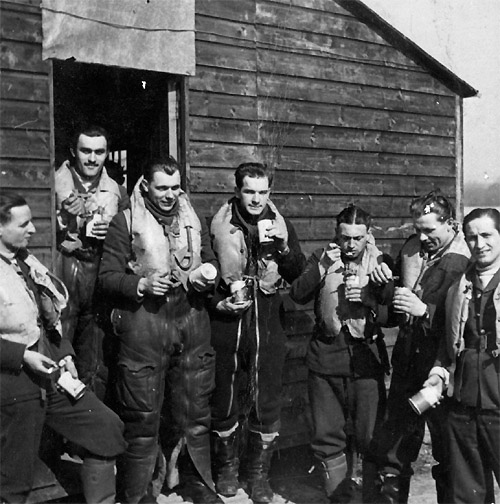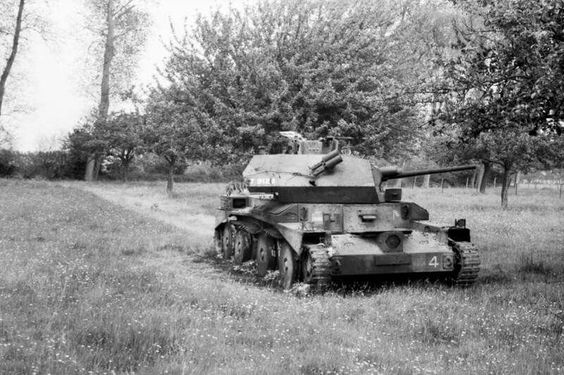Friday 11 October 1940
 |
| Bomb damage in Berlin being cleared up, 11 October 1940 (Ang, Federal Archives). |
The Jabos start early in the morning, attacking a convoy off Deal around 08:00. RAF No. 72 Squadron rises to intercept, and JG 53 pilots claim two Spitfires.
At 10:30, the Luftwaffe begins sending across four waves of Jabos on the Kent coast, one every fifteen minutes or so. They try to reach London, but after RAF interception mostly drop their bombs at random along the southern outskirts (Ashford, Canterbury, Maidstone, Folkestone, Whitstable, and the Thames Estuary). This is a major operation by Fighter Command.
After lunchtime, at 14:00 another major raid develops near Hastings. This group splits up and heads for London, Portland, and Hornchurch. Other raiders cross the Essex coast and head for North Weald and favorite target Biggin Hill. This leads to another major confrontation, and the RAF takes a number of losses.
As daylight dwindles, a final raid is made by Dornier Do 17s against the Midlands and Merseyside regions around 18:00 onwards. RAF No. 312 (Czech) Squadron intercepts, as does No. 611 Squadron. The RAF fighters shoot down three bombers at the cost of two RAF fighters.
After dark, raider head across from all along the Channel coast. They all head for London. Wimbledon Tennis Club takes damage, including Centre Court, and so does the nearby golf course. In London, there is major damage to the City of London Electric Light Co. Bankside Power Station.
Further north, Liverpool also receives its usual visit, along with Aberdeen and the Firth of Forth area. The Liverpool docks area takes particular damage, and four ships in the port are sunk (discussed below). As the night wears on, London becomes the major target, though there are scattered raids (intentional or not) all along the southern coastline and in Scotland. The Luftwaffe also drops mines in the Thames Estuary and East of Scotland.
The day is notable for being a rare Luftwaffe win. The RAF loses 8 planes and the Luftwaffe 7. This is almost certainly due to the prudent use of Jabos during the shank of the day bombers only as daylight dwindles.
Oberst Werner Mölders of JG 51 shoots down a Spitfire over Canterbury during the morning raids for his 43rd victory. This maintains his lead in the top tier of Luftwaffe aces, followed closely by Adolf Galland.
The first Beaufighter night fighter squadron becomes operational.
The coastal guns at Hellfire Corner (Dover/Calais) exchange fire during the night, without any significant hits.
The first production Handley Page Halifax I (L 9485) bomber makes its maiden flight.
Battle of the Atlantic: German E-boat attacks can be short, sharp and extremely destructive. Such is the case today.
Very late in the day, Kriegsmarine E-boats Falke, Greif, Kondor, Wolf and Seeadler, operating out of Cherbourg, cruise to within 25 miles SW of St. Catherine Point off the Isle of Wight. They sink two Free French anti-submarine ships, including 778 ton HMT L'Istrac (12 men lost) and 445 ton HMT Warwick Deeping. The first is sunk by torpedo, the second by gunfire. There are no deaths on the Warwick Deeping, but 25 men are wounded. Both ships are part of the 17th Anti-submarine Group, and both trawlers are now popular wrecks for diving.
Just past midnight on the 12th - at 00:07 - the same German torpedo boats also sink Free French submarine chasers CH.6 and CH.7. There are 8-9 deaths on the CH.6, with 12 men taken prisoner; 12 deaths on CH.7, nine men taken prisoner. After these attacks, seven Royal Navy destroyers sortie from Plymouth and Portsmouth and chase away the German attackers without any more damage to either side.
Weather is rough in the North Atlantic, with heavy swells and fierce gales. This causes the crews of ships hit by torpedoes extra problems as they scramble to survive in lifeboats.
U-38 (Kptlt. Heinrich Liebe), on her seventh patrol and first out of Lorient, stalks Convoy SL 41. It torpedoes and sinks straggler 4966-ton freighter Llanfair West of Ireland and south of Iceland. There are 29 survivors and 3 crew perish.
U-48 (Kptl. Heinrich Bleichrodt), on her second patrol out of Kiel, stalks convoy HX 77 west of Ireland and south of Iceland. It torpedoes and sinks 4624-ton Norwegian freighter Brandanger, carrying lumber and metal. The ship takes only 20 minutes to sink. There are 24 survivors and 6 crew perish.
U-48 also torpedoes and sinks 8390-ton British refrigerated freighter Port Gisborne in the same Convoy HX 77. There are 38 survivors and 26 crew perish. Some of the deaths result when a lifeboat capsizes in the rough weather.
Royal Navy 117 ton yacht HMY Aisha, on patrol in the Thames, hits a mine and sinks in the Thames Estuary near the Isle of Sheppey, Kent. Everybody aboard survives.
In Operation Medium, battleship HMS Revenge departs from Plymouth on the 10th and shells Cherbourg in company with destroyers (Javelin, Jaguar, Jupiter, Kashmir, Kelvin, and Kipling) and anti-submarine vessels in the early hours (03:33-03:51) of the 11th. The port is lit by flares at the proper time in a well-coordinated effort, and the confused German defenders don't even realize at first that it is a naval, and not air, assault. Eventually, the Germans catch on and shell the Royal Navy ships with large (13-15 inch) coastal guns. The shells all miss as the range is an extreme 36,000 yards, but the misses are so close that they impress the Royal Navy officers, who guess that they are perhaps guided by some new radar detection equipment (they aren't - it is just good gunnery). The flotilla remains at sea with enemy boats in the vicinity as the day ends. The Cherbourg/Channel Islands area is becoming a hot spot for German E-boats and a problem for the Royal Navy.
Destroyer HMS Jersey, which just completed repairs from a previous mine explosion, is departing from the Humber off East Knob Buoy when it hits another mine and suffers minor damage. Jersey makes her way to London for more repairs.
At 09:20, destroyer HMS Zulu is sailing in the Firth of Forth when it detonates a mine about 40 feet off the starboard beam. This causes leaks to spring and other internal damage, so the Zulu heads to Rosyth for repairs. The damage turns out to be more serious than the initial incident might suggest, and the ship requires a lengthy time in drydock. No casualties.
The Luftwaffe attacks ships off Peterhead, causing minor damage to anti-aircraft ship Alynbank but otherwise accomplishing little.
The Luftwaffe also attacks freighter Thyra II in the Thames Estuary, damaging it.
The Luftwaffe damages freighter Bannthorn in Rathlin O'Birne Sound, Eire.
The Luftwaffe damages freighters Clan MacTaggart, Clan Cumming, and Highland Chieftan and tanker Virgilia at Liverpool Harbor.
Destroyer HMS Bedouin hits a rock or other submerged object off the south coast and proceeds to Southampton for repairs.
The German coastal guns at "Hellfire Corner" damage freighter Inver near Dover.
Convoy FN 306 departs from Southend, Convoy FS 306 departs from Methil, convoy OG 44 (36 ships) departs from Liverpool, Convoy BS 6A departs from Port Sudan bound for Aden.
Royal Navy submarine HMS Usk (N 65, Lt. Commander Peter R. Ward) is commissioned.
 |
| 24 Greek Street, Soho, London. The area was hit at 12:35, destroying buildings and a local gas main. Many people were trapped in the rubble. (Westminster City Archives). |
The British Mediterranean Fleet is sailing about 100 miles southeast of Malta, and an Italian plane spots it. There are large Italian forces both to the east and west of Malta. The escorting Royal Navy ships (four battleships) begin to head back to Alexandria late in the day after the Malta convoy makes port, is unloaded and returns to the sea. Some Italian naval units set out in pursuit, but the British have a large head start.
While it might seem trivial, the convoy makes a big impression on the British troops on Malta for a specific reason: it brings the first mail in some time. It is quite old, the voyage around Africa has taken weeks, but the experience is greatly treasured by men who have had no word of the safety of their families and friends back home in the Blitz.
Royal Navy cruiser HMS Ajax is sailing south of Sicily in support of a Malta convoy when 7 Italian torpedo boats attack. The Ajax fights them off, sinking two and damaging a third. Cruiser HMS York sinks the third torpedo boat.
Destroyer HMS Imperial hits a mine about 15 miles south of Dellmara near Malta at 11:05. One crewman perishes and the ship must be towed to Malta.
British sloop HMS Auckland, part of Convoy BS 6, is damaged by Italian bombers in the Red Sea about 50 miles south of Italian-held Eritrea.
The RAF bombs Italian positions in Benghazi and Tobruk. It also attacks Asmara, Eritrea and Gura, Abyssinia.
Finnish/Soviet Relations: The two governments complete a convention that demilitarizes the Aaland Islands. The ostensible purpose is "… desiring to strengthen their security and foundations of peace in the Baltic Sea.”
 |
| Pilots of No 302 (Polish) Squadron RAF at RAF Leconfield in October 1940. They move south to RAF Northolt on 11 October 1940. |
Goebbels does throw the Luftwaffe a bone by agreeing to issue formal denials to British claims that military targets have been hit which in fact have not - unless doing so would blow the cover of a massive deception being launched in which fake "military" sites are created to draw off the RAF bombers.
German Military: Generalleutnant Arnold Christian Rüdiger Joseph Maria Freiherr von Biegeleben (16 April 1883 – 11 October 1940) perishes of a heart attack. A Knight's Cross recipient, he is the commander of the 6th Infantry Division. He is replaced by Generalleutnant Helge Auleb.
Japan: There are annual naval reviews in Tokyo Bay and Yokohama Bay.
French Homefront: Philippe Pétain, who fancies himself somewhere between a satrap and a dictator, addresses the nation by radio broadcast. He urges the people of France to drop their ancient antagonism to Germany and instead focus on the real enemy: Great Britain. Pétain announces that Vichy France henceforth will collaborate with Germany.
General Charles Hunziger - who signed the Armistice agreements with Germany and Italy - presents the Order of Merit and the Croix de Guerre medals to the American Hospital in Paris, France.
American Homefront: "Down Argentine Way," a rare technicolor musical from the period, is released. It stars Carmen Miranda and Betty Grable, who becomes an "overnight star." There are very few technicolor cameras in existence, so each such release (such as "Gone With The Wind") draws a lot of attention.
 |
| President Franklin Roosevelt (in motorcar) at the dedication of the Terrace Village Housing Project. 11 October 1940. |
October 1940
October 2, 1940: Hitler's Polish Plans
October 3, 1940: British Cabinet Shakeup
October 4, 1940: Brenner Pass Meeting
October 5, 1940: Mussolini Alters Strategy
October 6, 1940: Iron Guard Marches
October 7, 1940: McCollum Memo
October 8, 1940: Germans in Romania
October 9, 1940: John Lennon Arrives
October 10, 1940: Führer-Sofortprogramm
October 11, 1940: E-Boats Attack!
October 12, 1940: Sealion Cancelled
October 13, 1940: New World Order
October 14, 1940: Balham Tragedy
October 15, 1940: Mussolini Targets Greece
October 16, 1940: Japanese Seek Oil
October 17, 1940: RAF Shakeup
October 18, 1940: Convoy SC-7 Catastrophe
October 19, 1940: Convoy HX-79 Catastrophe
October 20, 1940: Convoy OB-229 Disaster
October 21, 1940: This Evil Man Hitler
October 22, 1940: Aktion Wagner-Burckel
October 23, 1940: Hitler at Hendaye
October 24, 1940: Hitler and Petain
October 25, 1940: Petain Woos Churchill
October 26, 1940: Empress of Britain Attack
October 27, 1940: Greece Rejects Italian Demands
October 28, 1940: Oxi Day
October 29, 1940: US Draft Begins
October 30, 1940: RAF Area Bombing Authorized
October 31, 1940: End of Battle of Britain
2020















